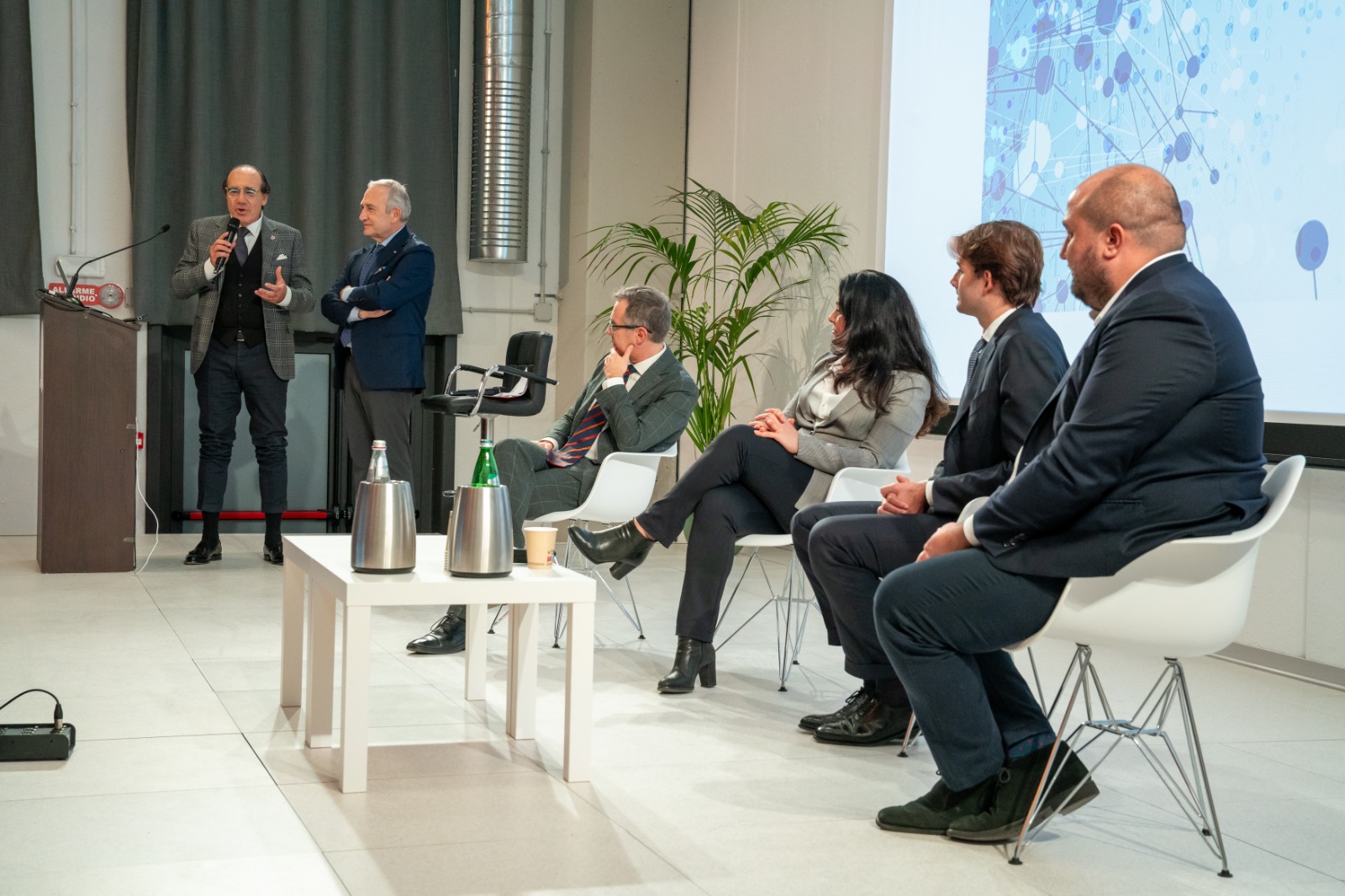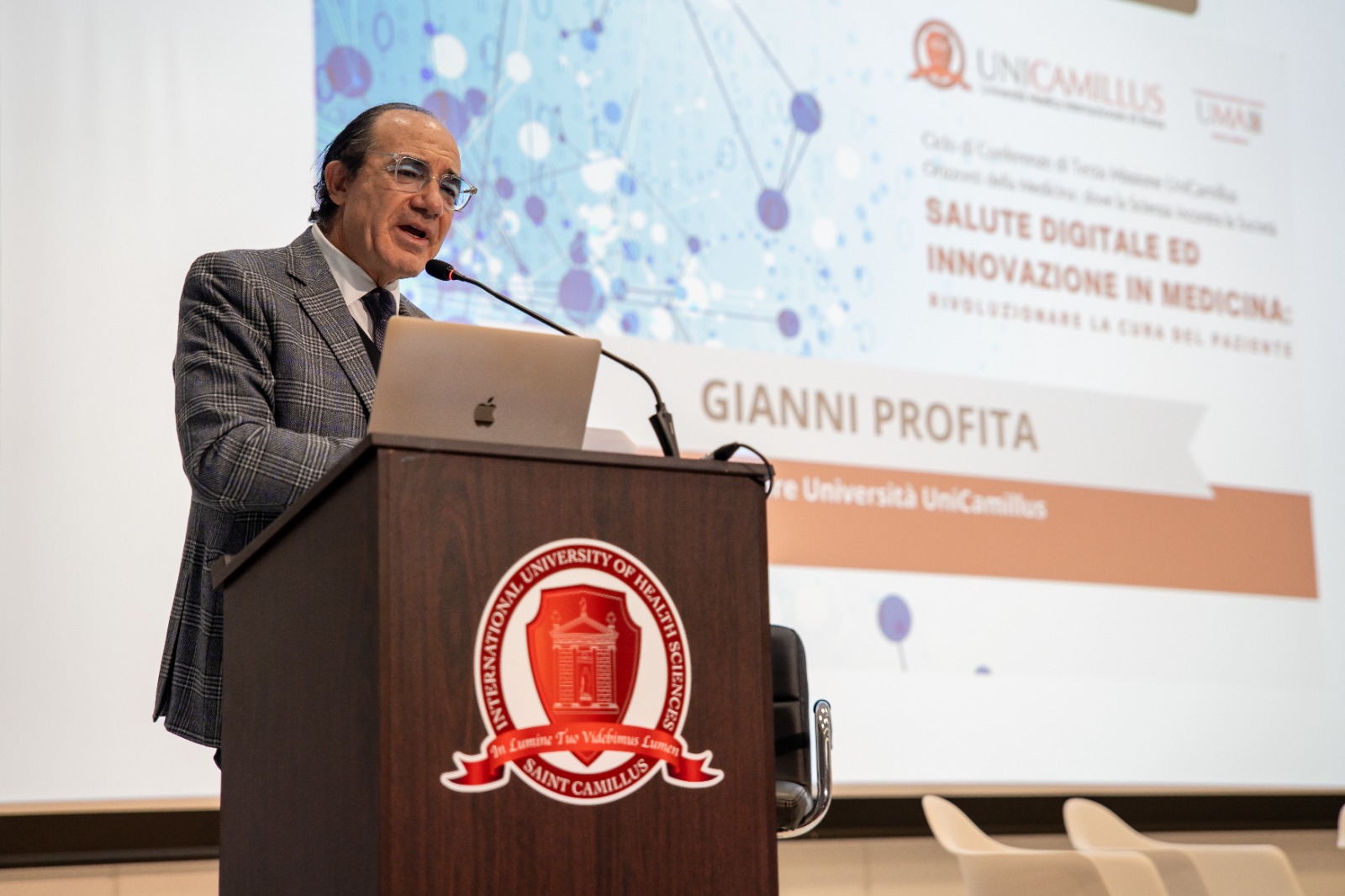Bernardini: “5,000 people die every year from lung cancer, but AI helps in prevention”. Fazio: “Telemedicine could reduce emergency room crowding by 70%”. Weltert: “AI is excellent for monitoring symptoms”. Giannessi: “Digital simulations to protect the patient”.
Digital health: a goal or a starting point? This is what was discussed on Friday 15 December in the auditorium of UniCamillus in Rome, a university whose programmes are entirely about the medical sciences. The theme of the conference was “Digital Health and Innovation in Medicine: Revolutionising Patient Care”.
From remote monitoring to accessible clinical data, from technological simulations to applications based on statistical data, in the vast field of artificial intelligence, digital health is revolutionising the healthcare sector, promoting personalised care, optimising efficiency, and increasing patient participation.
And universities are becoming a unique ally. “Innovation in our country must come from research, of which universities are the hosts, and digitalisation is the tool”, said Francesco Vaia, Professor of Business Economics at UniCamillus and Director General of Health Prevention at the Ministry of Health.
Never the first time on a patient: AI role in medical simulation
This presentation by Massimo Giannessi, Director General of Accurate, focused on the role of students. This company develops models that enable simulation in medicine, allowing students and healthcare professionals to practise with AI-driven robotic mannequins, simulation rooms and digital platforms with targeted exercises: “Our motto is ‘Never the first time on a patient!‘. In this way, intubations, ultrasound scans, and injections can be experienced before coming into contact with patients.
AI and oncology diagnostics
Giada Bernardini, an expert in business development and strategy at Siemens Healthineers, highlighted the fundamental role of AI in the preventive diagnosis of otherwise difficult-to-detect tumours. “In Italy, there are more than 5,000 lung cancer deaths per year. This is because lung nodules are detected at an advanced stage, and less than 20% of patients survive. AI can assist radiologists thanks to new software in CT scanners that identifies nodules smaller than 3 mm, i.e. those that can be easily removed through surgery.
In terms of therapies, AI can also help administer radiotherapy more precisely: “There are AI-assisted systems that transmit information to the radiotherapy machine about which areas to target and which organs to protect”.
Telemedicine: a potential answer to patient dissatisfaction
Alessandro Fazio, CEO of Dr. Feel, explained how telemedicine fills a gap between increased patient demand and a shortage of doctors. “70% of Italians are dissatisfied with the healthcare system and 76% complain about waiting times. This is also due to a significant shortage of doctors: in the next five years, 45,000 doctors will retire, leaving 14 million Italians without a GP”.
Telemedicine can help in a number of ways. On the one hand, it gives more people access to routine check-ups: “A recent study of teleconsultations in Lazio shows that the number of telemedicine services last year was 200,000”. On the other hand, it prevents overcrowding in emergency rooms, “reducing admission by 60-70%”.
AI for diagnosis and treatment? Better to use it for patient monitoring
So, can digital health do it all? Let’s not be too hasty. That’s the warning from Luca Weltert, lecturer in Medical Statistics at UniCamillus and Medical Director of Cardiothoracic Surgery at the European Hospital.
“It is possible to develop some human skills digitally, but not all. For example, diagnosis requires a medical history: is this a process that can be transferred digitally? Yes, and Covid has taught us that. What is missing, however, is empathy, the understanding gaze between doctor and patient that cannot be replaced”. The same applies to therapies. For Weltert, we should take advantage of the added value that machines bring to human beings, without trying to replace them.
However, in the field of cardiology, AI seems promising for patient follow-up, i.e. the process of monitoring patients’ data after they have been hospitalised or undergone surgery, all conveniently on their device. “UniCamillus believes in all this, to the extent that it provides students writing their dissertations with an app containing statistical data based on the monitoring of cardiac patients”.
To make room for all this, a cultural change is needed. “Our social mindset still does not fully trust AI, also because technology is advancing at an incredible pace and people want to better understand what it is”, says Donatella Padua, Scientific Director and UniCamillus delegate for the University’s Third Mission.
Rector Profita was enthusiastic about the conference: “Today’s debate helps us to rebuild the relationship between medical sciences and manufacturing companies in a fruitful way”.



